Big SUV coupes do not have a very good reputation among fine-spirited business people. Too pretentious, angry tongues also like to talk about progeroid. Sure, it’s fun, with a BMW X6 (successor comes this year) to tear chunks out of the asphalt – sophisticated in appearance, he is not. Quite in contrast to the Audi Q8.
Since the Ingolstadt, a really universal piece of car succeeded. Even the shape is not so pseudo-sporty (if you look at it soberly) as the competitor from Munich or Stuttgart’s late-twin Mercedes GLE coupe, but simply sleek. So you perceive the Q8 also completely different, rather than the beautiful brother of the Q7, which he actually looks almost old and clunky.
Great, purely factual advantage on the line: In front, you can get in without having to pull in the head (ie without the risk of bumping it), and behind you can sit upright as an adult, even though the Q8 is four centimetres shallower than the Q7.
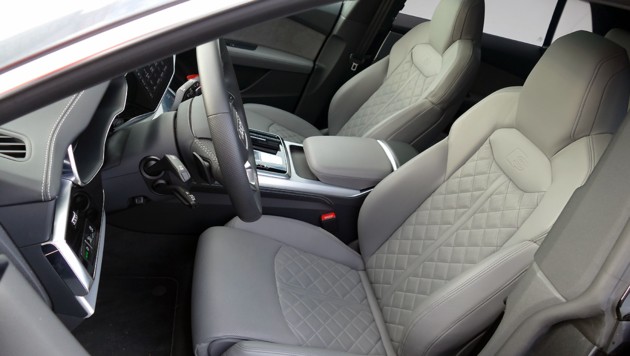
The height of 1.71 meters is on BMW X6 level, vehicle length and wheelbase are just under ten inches above the competition from Munich and Stuttgart. Nevertheless, the Q8 with 4.99 meters is just under seven inches shorter than the Q7. Instead of seven people come here five of them. The trunk holds 605 litres, with folded back seatbacks 1755 litres.
Operation as in the Audi A8
The interior looks clear and elegant, the running along the entire width of the console bar with integrated ventilation nozzles reminiscent of the VW Passat. Particularly classy: the seamlessly integrated upper display of the “MMI touch response” operating concept adopted from the A8. It includes two touch screens that provide haptic feedback; on the lower one can make handwritten entries that are better recognized than expected. The top screen measures up to 10.1 inches, the bottom 8.6 inches. In addition, Audi has now optimized the voice input quite a bit, it is supported by the cloud.
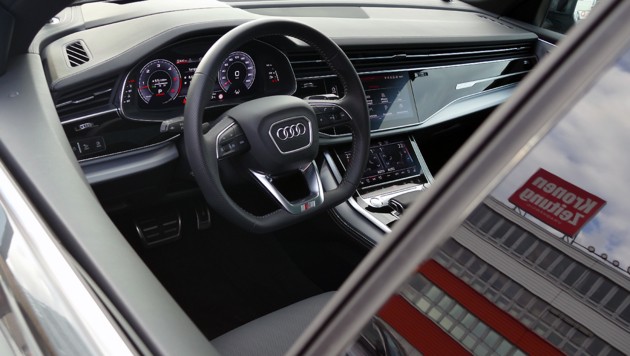
Another display, 12.3 inches tall, takes over the functions of Tacho & Co. as a virtual instrument cluster, supplemented by the head-up display, which projects information onto the windscreen.
MMI navigation plus, which includes the “Audi connect” data transmission module with the LTE Advanced standard and a WLAN hotspot, is standard onboard. The navigation recognizes the preferences of the driver on the basis of the routes travelled and should, therefore, be able to make intelligent suggestions. The online services of Audi connect complement the route planning with foresight. Thus, traffic sign information and hazard information benefit from the swarm intelligence of the Audi fleet. Optionally, the vehicle can be locked, unlocked and started via a compatible Android smartphone.
Light and games
The LED headlamps are standard on board, HD matrix headlamps with 24 individual LEDs are optionally available. At the rear, the LED fireworks continue: Here, the lighting is not only for safety but also for the play instinct. With the myAudi app, you can call up some fun lighting functions with which you can inspire the offspring. Or the child in a man, that sometimes likes it when it bling-blonds.
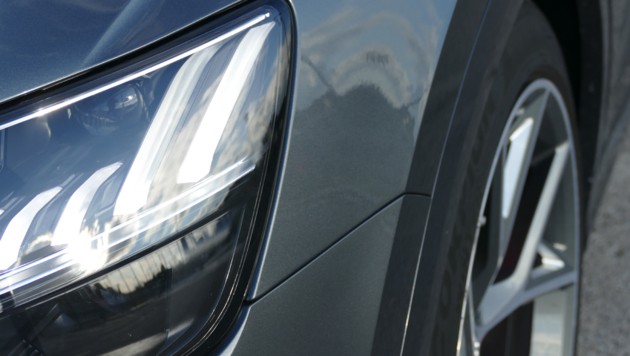
Offroad is in it too
The whole vehicle looks despite all massiveness athletic and a lively dance on the tarmac not averse. After offroad, the SUV looks essentially the only front, where an underride decorates the front. The rear indicated also goes through as a diffuser. Nevertheless, a trip into the terrain is unlikely, except for the up to 22-inch wheels, which are sensitive due to narrow tire sidewalls (285/40 R22, series 19 inches). Up to 25.4 inches of ground clearance offers quite a few possibilities. Standard is a suspension with adjustable dampers (and 22 centimetres ground clearance), optional there is a height of nine centimetres variable air suspension, either in the comfortable or sporty vote.
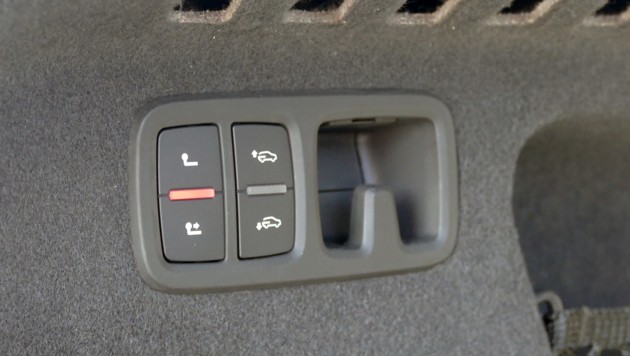
Dynamic promise
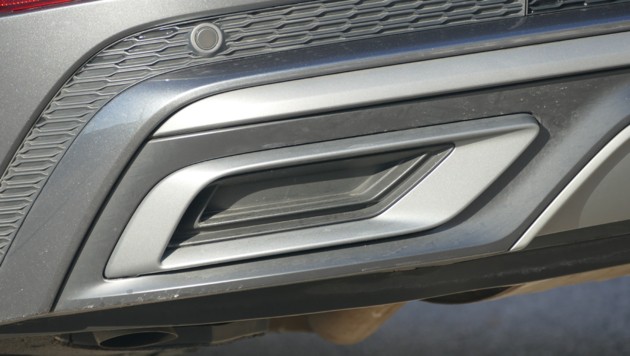
The all-wheel-drive is standard and distributes the power via a mechanical centre differential in principle in the ratio 40:60 on front and rear axles, which promises an extra dose of driving pleasure thanks to rear-facing. Depending on requirements, the majority of the torque can also go to an axis, quite variable. Also good for the dynamics is the optional all-wheel steering. The rear wheels hit up to 5 degrees, depending on the pace with the front wheels or opposite. Thus, the Q8 acts nimbly, as its dimensions and weight (2145 kg to DIN) would be expected.
48 volts and patience in the Topdiesel
The motorization of the test car is called 50 TDI. That does not tell them anything? That’s the way we are. So plain text: Onboard is a three-litre V6 diesel with 286 hp and 600 Nm of torque, which pushes the load in 6.3 seconds from zero to 100 km / h and further accelerated to 232 km / h top. The turbodiesel is supported by a belt starter generator, which accelerates when needed or recovers energy for the lithium-ion battery. In addition, it allows between 55 and 160 km / h long sailing phases with the engine off and in front of the traffic light a particularly early shutdown of the engine (at 22 km / h). Overall, daily consumption is expected to fall by 0.7 l / 100 km.
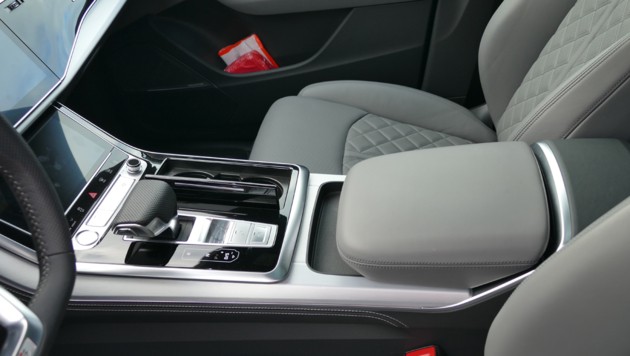
So far, so inconspicuous. What is noticeable in everyday life, however, is the extreme delay with which the engine comes to the point. It takes 2.25 seconds measured to really come to power. And not only when starting, but also when accelerating while driving. Audi explains that by activating the emission control and praised to work on improvement.
Alternatively, two other engines are now on offer: the Q8 45 TDI (ie the 231-hp version of the test car) and the 55 TFSI, so the three-litre six-cylinder petrol engine with 340 hp. All with four-wheel drive and 48-volt mild hybrid system.
Full assistance broadside Assistance
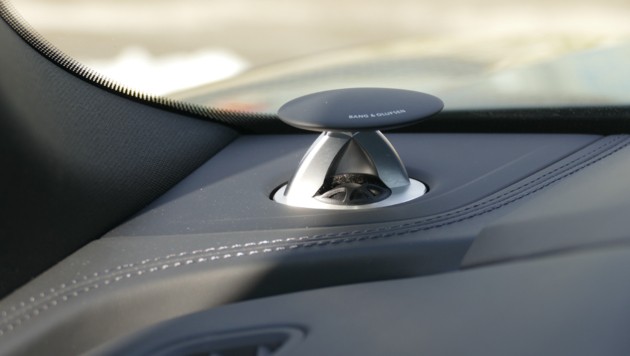
systems available in the Audi Q8 include adaptive driving assistant, intersection assistant, lane change warning, curb warning and ambient cameras. At the beginning of 2019, Remote Garage and Park Pilot will follow. This controls the SUV with simultaneous monitoring by the driver automatically in a garage/parking space and backs out. The driver exits in advance and activates the process on the smartphone. This is possible with up to five radar sensors, six cameras, twelve ultrasonic sensors and the laser scanner.

